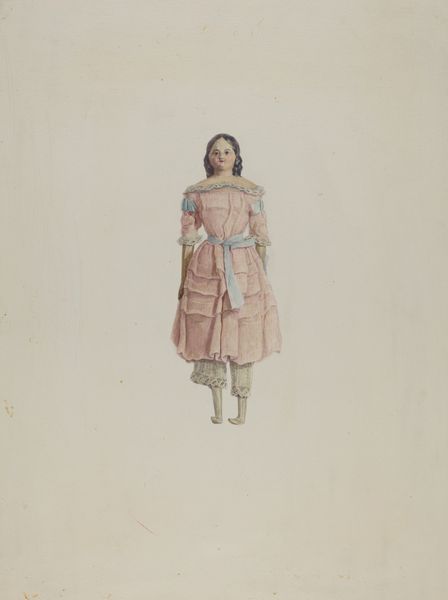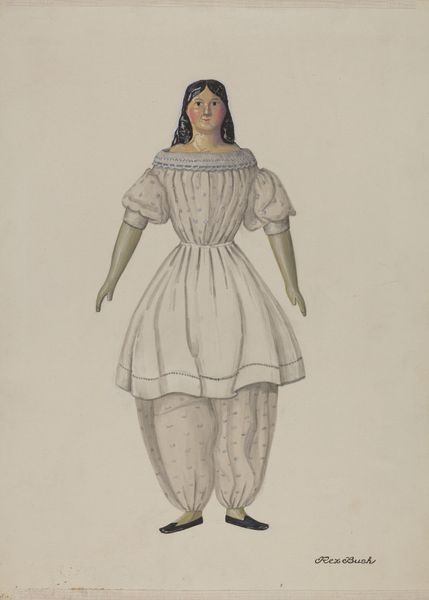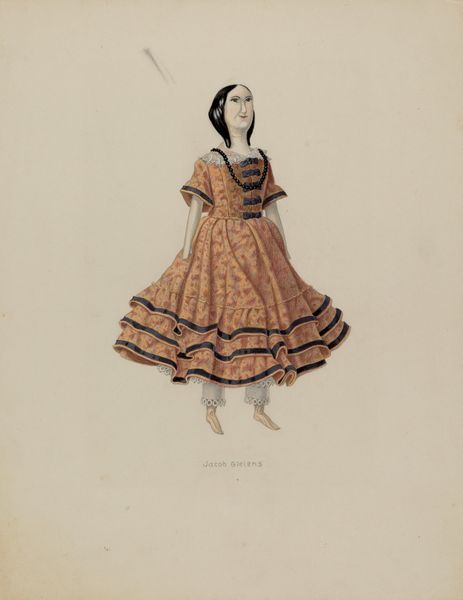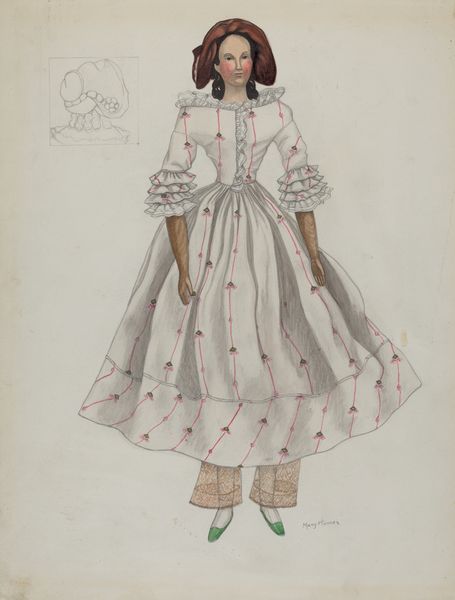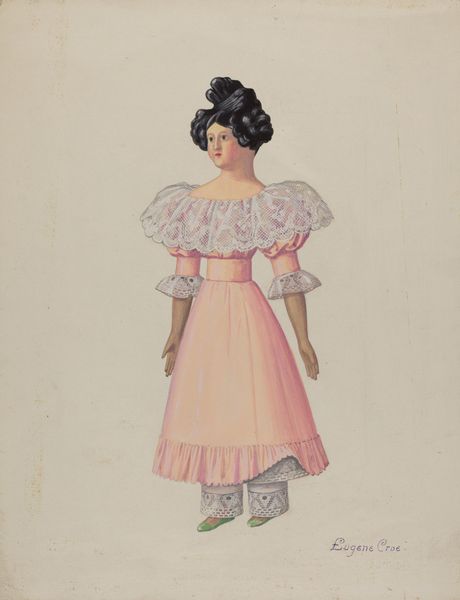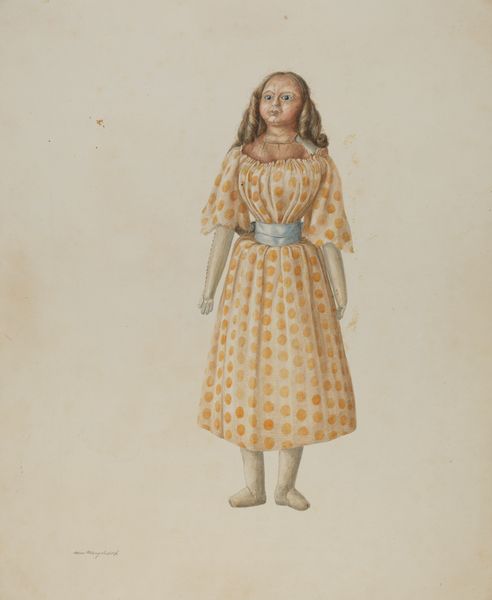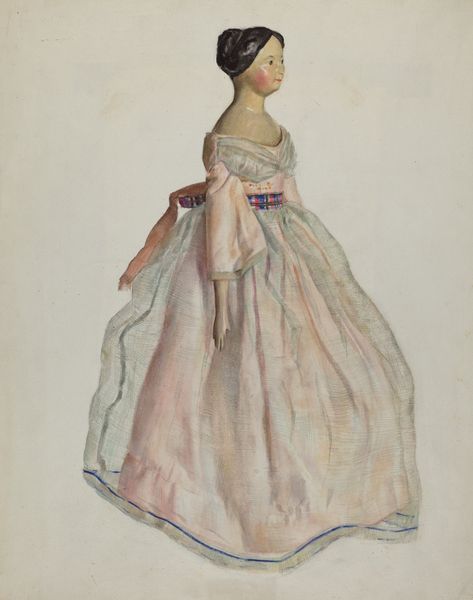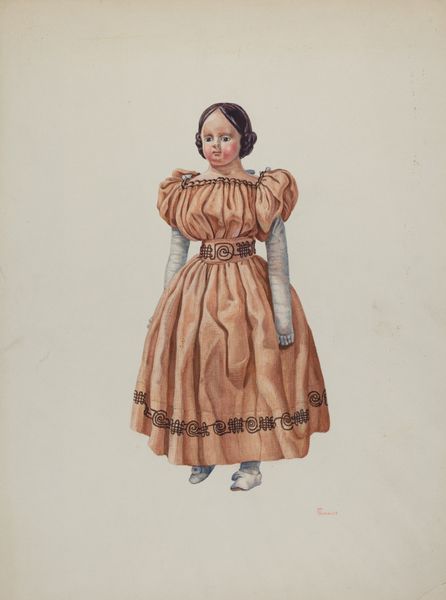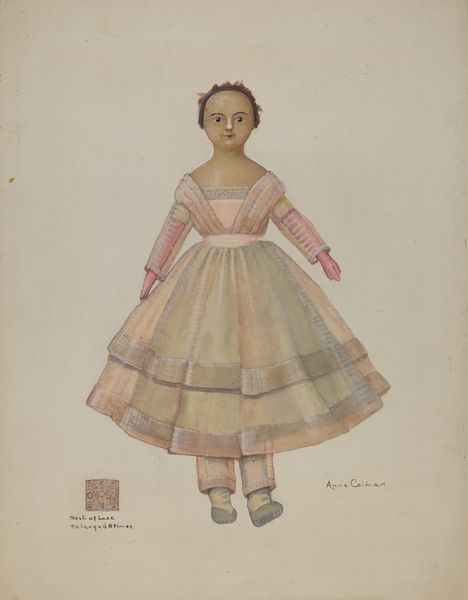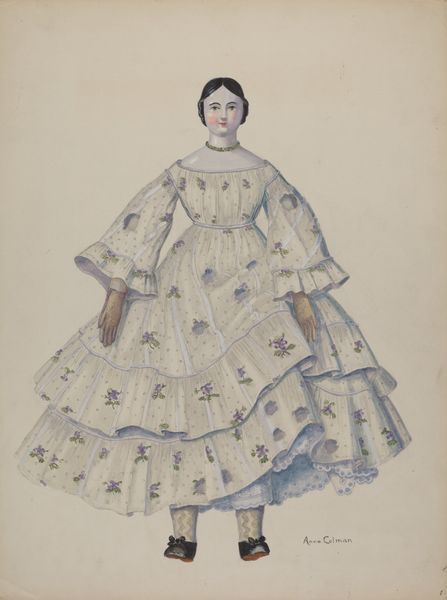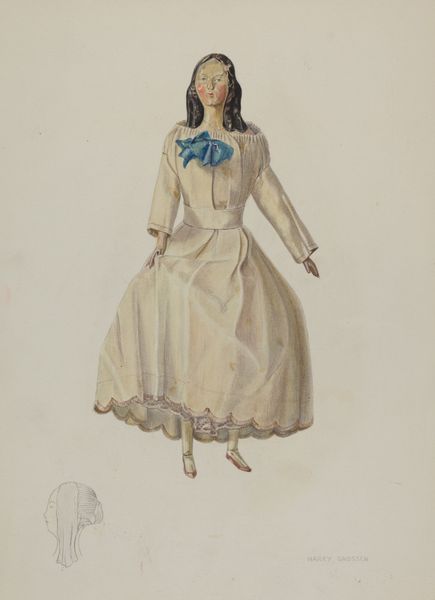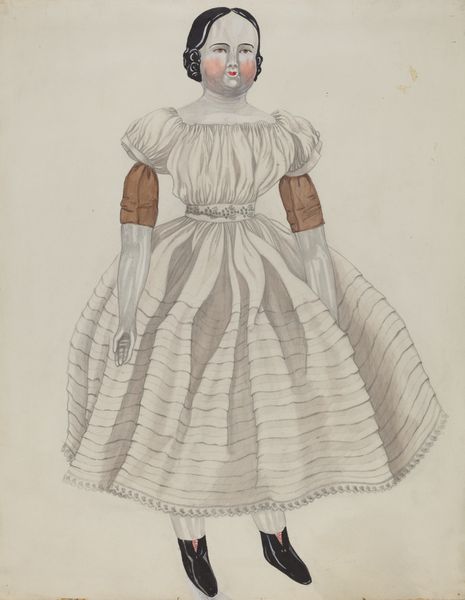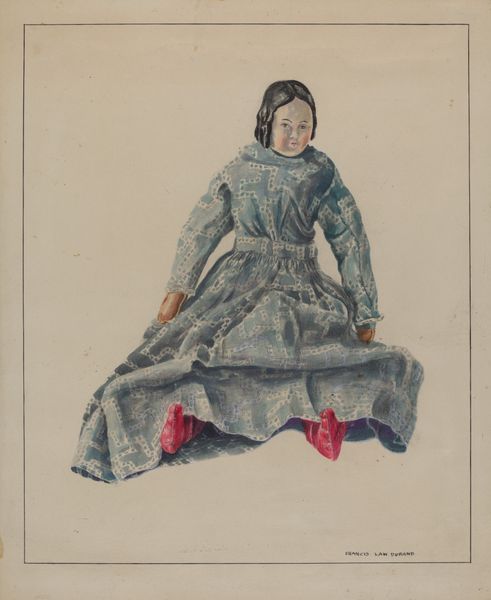
drawing, coloured-pencil
#
portrait
#
drawing
#
coloured-pencil
#
figuration
#
pencil drawing
#
coloured pencil
#
watercolor
Dimensions: overall: 49.7 x 36.8 cm (19 9/16 x 14 1/2 in.) Original IAD Object: 10 3/4" high
Copyright: National Gallery of Art: CC0 1.0
Curator: Let’s turn our attention to this coloured pencil drawing from around 1938, titled "Doll," by Rex F. Bush. Editor: It's interesting; my first thought is that it looks like a very carefully documented dress design. Curator: Well, dolls often reflect societal values and aspirations. Examining this doll and her attire gives insights into the cultural expectations placed upon women in the 1930s. Think about the implications of presenting young girls with idealized representations like this. Editor: I am seeing that pink confection in a different light now. What materials were readily available and how skilled were the makers? It speaks to a certain kind of industry or hobby culture – the labor and skills embedded in the making. The drawing also shows us the textures. It isn’t just pink. There’s a netted element involved. Curator: Exactly. And the artist, in rendering the lace and the ruffles, presents a world of constructed femininity that reflects and reinforces a rigid class structure. We have to think about gendered labour, and gendered expectation. Editor: The colour-pencil choice and drawing medium is an interesting choice as well, not fine oil paint or marble. It suggests something accessible and personal and almost amateur-ish. This changes how we interpret it, as if the rendering comes from a place of intimacy, maybe a parent drawing the design, and dreaming of this attire for a child. Curator: It's about connecting that specific individual expression to larger historical and social themes. What stories are implicitly being told about identity, especially childhood identity, in this carefully constructed depiction of a doll? Editor: I agree completely; by focusing on the how and why of this particular depiction, and on its place in design and material history, we move past the aesthetic appreciation, and begin to understand its full context. Curator: It certainly encourages further exploration and critical thinking. Editor: Yes, thank you for the opportunity to see its multiple possibilities.
Comments
No comments
Be the first to comment and join the conversation on the ultimate creative platform.
